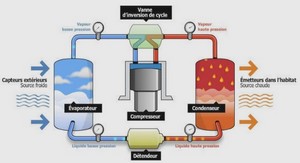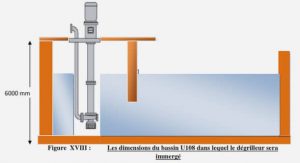Les isotopes cosmogéniques 3He et Be dans les
minéraux mafiques
Samples
Calibration of TCN production rates requires analysis of natural surfaces which (i) can be independently dated with precision, (ii) have suffered negligible erosion, and (iii) have not been buried in anyway since the start of their exposure. Basaltic flows may be considered as ideal objects for such calibrations as their ropy flow surfaces can be used as a qualitative check of the “negligible erosion” condition, and also because they are often suited for radiometric dating by K-Ar or 14C on entrained organic material. 2.1.1 Etna volcano samples Mount Etna volcano (Sicily, 38°N) has produced large alkali trachybasalt eruptions since ~200 ka. These flows are well-suited for cosmogenic 3 He calibrations because their ropy surfaces have been affected by only minor erosion in many places, even after several kyr of exposure. Moreover, the K content (~2%) of these basalts makes them appropriate for K-Ar dating (Gillot et al., 1994). The samples considered here have already been described in another study designed to test a paleoaltimetric method based on TCN production (Blard et al., 2005). The two (re)analyzed lava surfaces, SI41 and SI47 (Table III.1) belong respectively to the Nave flow, 33±2 ka, and the Simeto terrace flow, 41±3 ka (Blard et al., 2005).
Mauna Loa and Mauna
Kea (Hawaii) samples Mauna Loa (4170 m) and Mauna Kea (4206 m) are the two highest shield volcanoes of the Hawaii Island (20°N) (Fig. III.1). Mauna Kea is mainly built by tholeiitic basalts which are overlain by later alkali basalts. Several Pleistocene flow surfaces have been exposed and preserved of any burial during several kyr since the main eruptive activity of this volcano stopped at ~50 ka. Located in the dry region of Waimea (Fig. III.1), the MK4 surface (830 m) (Table III.1) was collected on a ropy alkali basalt flow which has been K-Ar dated at 149±23 ka (Wolfe et al., 1997). The annual rainfall being very low (< 450 mm.yr-1) on the western side of Big Island, this flow is likely to have suffered very limited erosion since its emplacement, as suggested by the remarkable ropy surface preservation (Fig. III.2). Moreover, no clue of thick ash covering has been observed, even in the depressions. On the other hand, Mauna Loa volcano still presents an intense eruptive activity. Consequently, more than 95% of the volcano flanks above 1000 m are covered by historical lavas (< 6 ka). Because of the low K content (< 1%) of these young tholeiitic basalts, K-Ar dating cannot provide the precision required for TCN production rates calibration. The sampled surfaces have thus been selected on young flows independently dated by 14C. Fig. III.1. Satellite image (Spot) of Big Island (Hawaii) and samples locations ML1A, B, C MK4 Altitudinal section ML5A ML10 to ML14 20 km MAUNA KEA MAUNA LOA N 20° N 19° W 156° W 155° Before measurement by Accelerator Mass Spectrometry, the charcoal samples have been pretreated to eliminate contamination (Trusdell). The 14C dates have then been adjusted using the calibration curve of Reimer et al. (Reimer et al., 2004). To limit the risk of potential flow confusion, the surfaces studied here have been sampled close to the location of the 14C dating sites. Fig. III.2. Photos of several sampled ropy flow surfaces (ML1A, ML10, MK4) Two Mauna Loa flows presenting all the requirements for accurate calibration were sampled (Fig. III.1 and Table III.1): – Kaunamano flow, 14C age cal. 8230±80 yr BP, pahoehoe features, ~25% of 1-2 mm olivine phenocrysts, close to sea level. On this flow, three samples (ML1A, ML1B, ML1C) were collected within an area of 1km², in order to reproduce measurements from a single well documented surface. – Kapapala flow, 14C age cal. 1470±50 yr BP, pahoehoe features, ~10% of 0.5-1 mm olivine phenocrysts. The analyzed sample, ML5A, was collected at 870 m elevation. The uncertainties associated with these 14C ages are only analytical, and thus only partially reflect the absolute accuracy of the flow ages. However, the robustness of these individual 14C flow ages is supported by bracketing provided by independent 14C dating of underlying and overlying lavas (Trusdell). Finally, another study by (Gayer et al., 2004) revealed an unexpected overproduction of cosmogenic helium in garnets at high elevations (> 3000 m). Analysis of olivines exposed at high elevation is one way to assess if this 3 Hec excess is specific to garnets. The 3 Hec production systematic is indeed more documented for this mineral. Consequently, an altitudinal section (samples ML10 ML12A,B, ML13, ML14A,B) has been collected following the same single flow ropy surface from 4000 to 2400 m (Fig. III.1 and Table III.1). The continuity of this flow is not clear below 2000 m, where the tropical forest covers the lava. The 14C dates available in this area thus cannot be considered as robust to date the upper part (< 2000 m) of the flow. Nevertheless, inaccurate dating of this flow is not a drawback as the goal of this sampling was to derive an empirical atmospheric attenuation length for 3 Hec in olivines.
CHAPITRE I – INTRODUCTION : LES ISOTOPES COSMOGENIQUES EN GEOMORPHOLOGIE – PROBLEMATIQUE |






